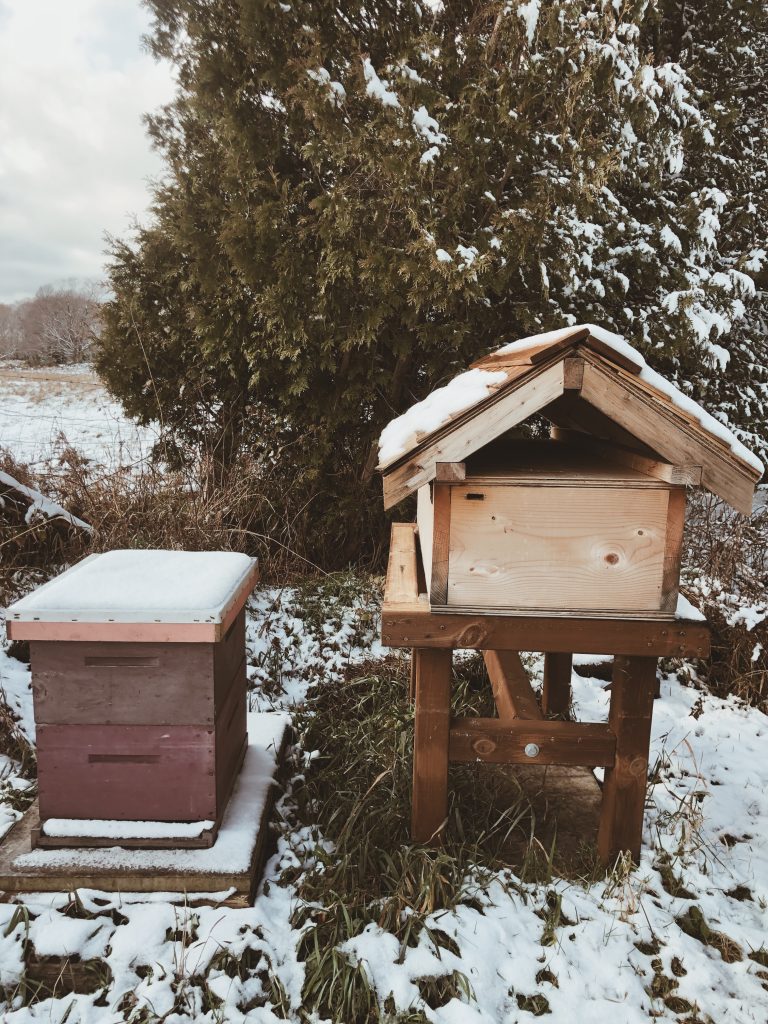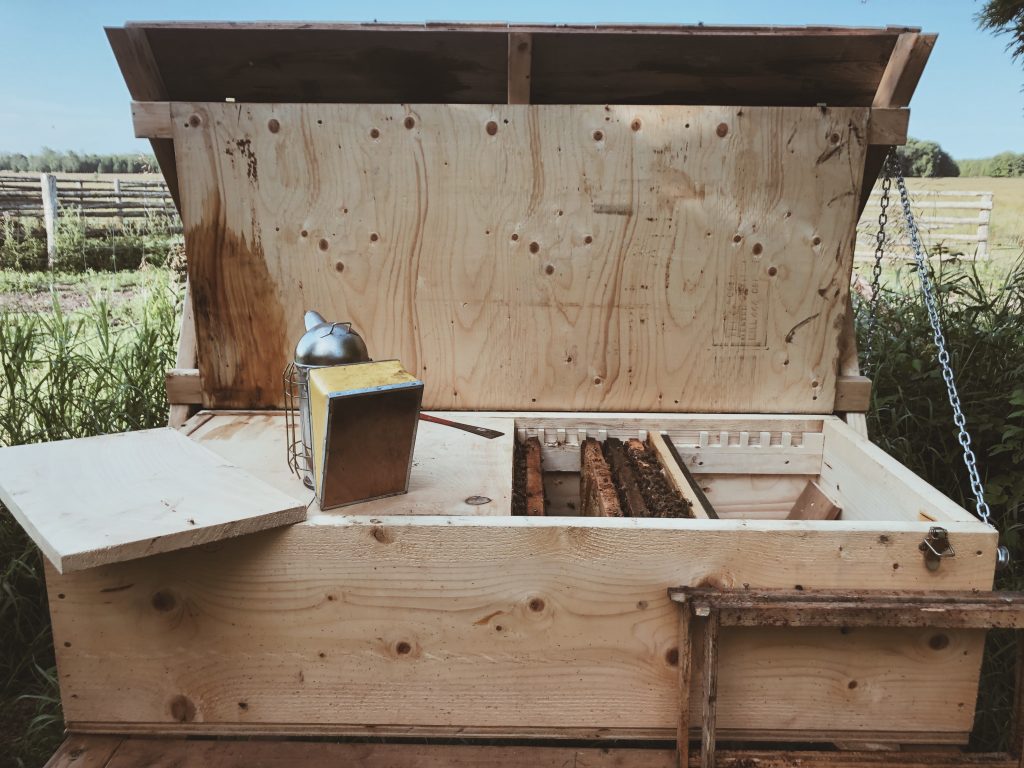Welcome to Our Winter Beehive
Now that snow covers the ground where we live, I know that even though I can’t see them, the honeybees are still working hard within the hive’s four walls. Up until now, on any day warm enough to do so, they continued to collect and store food for the winter, and utilized propolis to fill in any cracks or openings to minimize the potential for drafts and cold air getting in. During this time, the colonies also downsize, determining who stays and who goes, reining in their numbers for the colder days ahead.
Foresight, I think, is something the honeybees know all about, thinking always and planning for the future.

In efforts to try and help keep our honeybees alive, after two consecutive years of losing them to the Varroa mite, we are hopeful going into this winter. The Varroa mite, which hadn’t been introduced to North America until the 1980s, has been an ongoing problem for most beekeepers in our area. This parasitic mite feeds on the honeybee, attaching itself to the honeybee like a tick, until it overcomes them.
Varroa Mites
Most beekeepers use thymol-based products, which are said to help keep them at bay. However, our first year of beekeeping we thought this seemed unnecessary, giving notion to the idea that they have long since survived without the use of our man-made chemicals. We discovered the following Spring the little red spots, which at closer look, we knew to have been the mite we had not done anything to prevent. That being said, still being new to beekeeping, we looked at this unfortunate circumstance as a learning opportunity, a way we could look into the hive more closely than we could have, had they survived. The second year, we used the recommended strips, but again the Varroa mites got the best of them.

This year, we thought we ought to do something different. In the process of trying to learn as much as we can, we came across the works of Michael Bush and Leo Sharashkin. In addition to speaking to local beekeepers and a good friend, Bella Donna, after some time and a little leg work, we built a second hive.
“…each little thing you can do makes a difference”
Our second hive works horizontally, as opposed to the traditional Langstroth hive, which stands tall, vertically stacking boxes, the type of hive you will most often see, driving by farms and down country roads. In contrast, this new hive we built in the spring sits honeycomb filled frames side by side, in a long row. With two-inch thick walls, as opposed to the 3/4“ walls, we hope to better insulate the hive without having to add any exterior casing. Some other modifications we made were creating only one entrance, hence reducing the potential for invaders and allowing the bees to more easily guard the opening. Our hive sits roughly two and a half feet off the ground, helping to prevent small mammals from sneaking their way in and stops us from needing an entrance reducer – a piece of wood which you’d typically insert into the opening of a traditional hive that spans the width of the box. Our frames, where the bees build and fill honeycomb, also have had their plastic backings removed, as it was suggested to us that the size of these molded plastic pieces is the ideal size for Varroa to lay their eggs in. It has been said that each little thing you can do makes a difference, if only increasing their odds by a percent at a time.

So in preparation for winter this year, we prepared our old hive the way we always have, reducing the size of the entrance, again preventing invaders and decreasing drafts, insulating the top of the hive with wool and surrounding the hive with its reflective winter casing. As for our new horizontal hive, all of the preparations were done in the process of its build. Making these changes we hope will not only will prevent the mites, but keep the honeybees warm enough all winter long, In both hives, we decided to use Thymol, one of the major constituents of essential oils of thyme (Thymus vulgaris L., Lamiaceae), hoping to keep the mites at a distance with its strong aromatics.
In hopes of giving them a better start going into winter, we also give them the opportunity to collect what remains off the frames we’ve extracted honey from. By the end of Fall, when the weather’s still warm enough for them to fly, there isn’t a whole lot for them to forage from, so giving them back these trays allows them to collect whatever they can to use again. This is also the case for trays where the honey has crystallized and can no longer be extracted. This year we had been so busy, we didn’t get around to our honey harvest until late October, and unfortunately by then a large amount of our honey had already turned. Typically, this would be a great opportunity to keep the comb intact, storing the honeycomb as is, in jars. However, since we removed the backings from all our frames, we want to keep the newly constructed honeycomb intact to strengthen for next year’s use. As we’ve been told, the honeycomb hardens over time, and through the seasons.
“As we learn, we hope to always do right by the bees”
All this to say, we certainly aren’t experts in the matter of beekeeping. But as we learn, we hope to always do right by the bees, doing the best we can to give them the best chance to survive the days to come. We are hoping that by the time Spring rolls around again, we are gifted with the hum of our honeybees, a sound we always look forward to hearing as the ground turns from white to green.
Blog photos provided by Chelsea!
Chelsea Vieira
Chelsea is a community herbalist and an all-around plant enthusiast. From a young age being fond of the wonders of the natural world, she's since gone on to help others reconnect and rekindle this relationship, and the magic it encompasses. Inspiring a harmonious and symbiotic relationship with all the kingdoms!
Subscribe to Blog via Email



